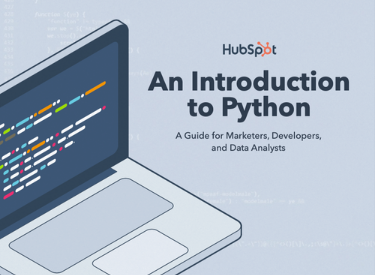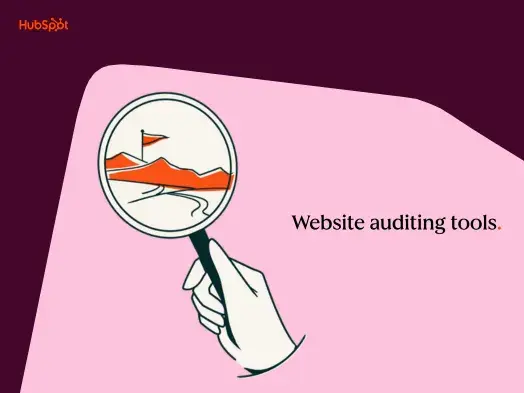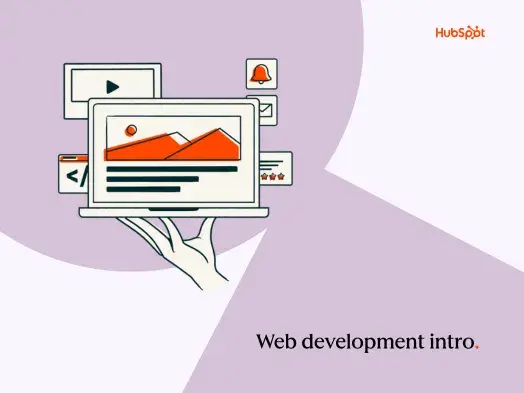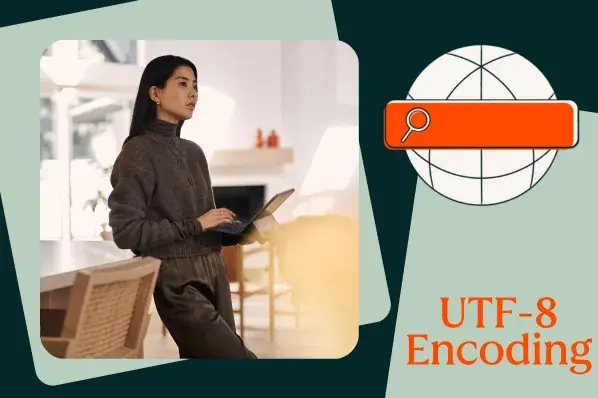In this post, we’ll explain everything you need to know before embarking on a career in web development, including:
- What Web Developers Do
- Skills and Languages Web Developers Need to Know
- Where you can learn web development online
- Six Steps to Begin a Web Development Career
- Best Online Learning Platforms For Aspiring Web Developers
Within a company, web developers work closely with other stakeholders to understand what they need to build and how the end product should look and work. These stakeholders include web designers, product managers, and user experience (UX) designers and researchers. Generally, designers handle how the website looks, and developers turn the designs into a product.
In addition to building websites and applications, web developers are responsible for maintaining them. Site maintenance involves catching and fixing bugs that affect the program, implementing new features to enhance the product, integrating third-party software, and improving usability, speed, and security.
Types of Web Developers
Web development can be broken into a lot of categories, so it helps to narrow it down to a few types of developers: front-end web developers, back-end web developers, full-stack developers, and specialized developers.
Front-End Developers
Front-end developers (or client-side developers) work on a website’s “front end,” the part that visitors can view and interact with. When you imagine a website, you’re probably picturing the front end — the text, images, colors, and other elements that make the site look that way. Front-end developers use three languages — HTML, CSS, and JavaScript — to build the front end in the user’s browser, as well as ensure that these pages look good across different devices and screen sizes. We’ll discuss these languages in more detail later on.
Back-End Developers
Back-end developers (or server-side developers) focus on the back end of a program, everything that normal users don’t see. Back-end developers handle things like database storage, server management, security, integrations, and program logic — it’s their job to ensure that all of these invisible components work together smoothly to support the front end. Back-end development requires knowledge of server-side languages like Python, Java, and SQL.
Full-Stack Developers
Full-stack developers contribute to both front-end and back-end web development and understand the “full stack” of technologies required to power a website. Full-stack developers work for many years in the industry and across different roles to gain a thorough understanding of both the front end and the back end of website development. As a result, they can build a site from the interface to functions on the server.
Specialized Developers
Developers often focus on one area of development such as security, mobile development, database management, accessibility, information architecture, or WordPress sites. Specialized developers carry deep knowledge of these topics beyond what a typical front-end or back-end developer might have.
What web developer skills should you know?
Web developers employ a variety of skills in their day-to-day workflow. These skills include writing code in specific programming languages, as well as soft skills like collaborating with team members and problem-solving.
Let’s unpack what specific skills you need to begin a career in web development, starting with coding languages developers should know.
Coding Languages
Coding languages (or computer languages) are a web developer’s primary tool for building websites and applications. Developers use languages to instruct the computer on what to do, be it generating and styling a web page, storing items in a database, or performing mathematical operations on data.
There are many, many computer languages, all differing in their uses and syntax (i.e., the words and characters used in the code). Some languages are general-purpose, like Python and Java, meaning they can be applied to a wider range of uses. Others, like SQL, are made for more specific tasks.
It’s also important to make the distinction between coding languages in general and programming languages. Programming languages are coding languages that give the computer instructions to execute. All web developers write proficiently in at least one programming language.
As we’ll discuss, all web developers should know HTML, CSS, and JavaScript, as these are the building blocks of web pages. Those pursuing back-end development will want to master at least one server-side programming language too.
In addition to languages, developers often use libraries and frameworks. A library is a collection of pre-written code meant to be used with a language, and it helps you write code faster. Frameworks are like libraries but larger, providing a template-like structure for developers to code within.
As a beginner, the languages you’ll learn first will depend on which area of development you work in, and on your personal preference — you’ll favor some languages, libraries, and frameworks over others in terms of how they feel to write. To help you pick, let’s look at the most popular languages in use today. Some developers will even tell you they prefer to learn as many technologies as they can.
"After years of experience in the web development industry, I learned that the versitility of knowing so many technologies has saved myself and my teams many hours of hard work." — Athena Ozanich
HTML and CSS
HTML (Hypertext Markup Language) and CSS (Cascading Style Sheets) are two languages every internet user has seen. Simply put, these languages are what web pages are made of.
HTML sets the content and structure of the web page. It tells the browser which things go on the page and in what order. This content could include text, hyperlinks, images, menus, buttons, and any other visual element you’ve seen on a website. HTML is written in English, making it easy for developers to understand and modify.
CSS sets the styling of web HTML and is almost always used in conjunction with HTML to create visually engaging pages. CSS defines rules to control things like colors, fonts, borders, backgrounds, page position, and even animations.
HTML and CSS also handle responsive web design, resizing and rearranging page elements to fit the screen dimensions of the current browsing device. Bootstrap and Bulma CSS are popular front-end frameworks for building responsive web pages with less code than pure HTML and CSS.
Though web developers have some flexibility in which languages they can use, HTML and CSS are two that every developer needs to know. The web is built on these languages, so understanding them is foundational to understanding how websites and web-based applications work. Front-end developers should master these languages as well as their sibling programming language, JavaScript.
JavaScript
JavaScript is the programming language for web pages. While HTML and CSS determine what goes on a web page and how it looks, JavaScript handles the dynamic aspects of pages, including user interactions, advanced animations, and any other features beyond static content.
JavaScript is a high-level programming language, which means that it includes English words in its syntax and can be more easily read and written than lower-level languages. This makes it a fitting programming language to start with, especially if you’re more interested in front-end development. Front-end developers work mostly with these three languages — HTML, CSS, and JavaScript — to craft the user interface.
After some practice with plain JavaScript, it’s worth learning a library such as jQuery, which simplifies certain JavaScript functions, and a framework like Angular and Express.js.
Python
Python is a high-level general-purpose programming language that’s very popular among web developers. Commonly used on the back end of web applications, Python provides easy-to-use, beginner-friendly, but powerful capabilities. Python is another language many developers start with, and we recommend at least a familiarity with its syntax for all developers.
Java
Java is another powerful back-end programming language, right up there with Python in popularity. Java (not to be confused with JavaScript — despite the similar names, they’re different languages) is more code-heavy than Python, and thus more difficult to learn. Still, many developers prefer it, so consider trying it out after learning programming basics with JavaScript or Python.
PHP
PHP is a popular server-side programming language. It’s commonly used to construct dynamic web pages, those which display different content depending on the visitor. PHP can pull information from a site’s database, compile it into an HTML document, then send this document to display in the browser. PHP can accomplish many other server-side tasks involving data manipulation as well.
C/C++
C is one of the oldest programming languages still in popular use today, having served as inspiration for many modern back-end languages. C and its extension, C++, are frequently taught in introductory computer science courses as their relatively lower abstraction helps students learn programming fundamentals. Moreover, many people think learning C/C++ first makes other languages feel easier.
Ruby
Ruby is another widely used server-side general-purpose programming language made for building web applications. Ruby is commonly used with the web application framework Ruby on Rails — with these, a developer can build web applications quickly using Ruby’s intuitive, high-level syntax.
SQL
Many back-end developers work with databases, structures on a web server that store a website’s data. A database might store anything from a library of blog posts and videos, to a catalog of products, to a list of contacts.
To work with these databases, many companies utilize SQL (Structured Query Language) and its associated management system, MySQL. SQL is a common skill among web developers — it can be used to add items to and pull items from databases, as well as organize and modify database items.
More specifically, SQL handles a type of database called a relational database, in which data points are stored in tables based on their relationships with other data points.
Any of these programming languages would be a great starting point for your journey to becoming a web developer. That being said, there is more to becoming a web developer than just coding, here are some more skills you should consider.
Git
With several developers working out of the same code base, it becomes necessary to track when changes to the code are made, know who made which changes, and undo a change in case something goes wrong.
This is what Git is for. Git is a widely used command-line tool for version control. With it, web developers can push changes to a centralized location — a repository — and view a log of previous changes to track file versions. Web developers should know how Git works and how to use it to commit file changes to a repository.
Git is also the foundational software for GitHub, a platform for sharing open-source software projects. If you plan to share your future projects with the public via GitHub, be sure to learn the basics of Git first.
Problem-Solving
We’ve talked a lot about what coding languages developers use to drum up websites. However, the code itself isn’t the entire story of what a web developer does.
Especially in the beginning stages of your learning, you’ll find yourself spending less time writing the code and more time thinking about what code you’re going to write. This is because a big part of any developer’s job is first figuring out how to solve problems computationally.
When learning to code, you’ll train yourself to approach common issues with a computer scientist’s mindset. Web developers, regardless of specialty, know how to think logically like computers, how to break down technical problems, and how to best address these problems with their languages of choice.
Attention to Detail
Beginner web developers quickly learn that computers will only do exactly what they tell you to do, and nothing else. If the computer encounters any misplaced or miswritten code, it will spit an error back at you. And, even if you manage to get your code working, that doesn’t mean it’s working properly.
This is why developers need a keen eye for detail — when they encounter bugs, it’s their job to scan the code for the source of the error. You’re also going to have fewer errors if you pay close attention to your code as you write it. The best web developers understand both the big-picture of their projects and the smallest details that can make or break a program.
Collaboration and Communication Skills
Web developers need to effectively communicate the details of their work to fellow stakeholders, regardless of technical expertise. Fellow developers, designers and researchers, management, and leadership team will have varying levels of familiarity with your work and with programming in general. For the less tech-savvy, you should hone your ability to explain your code without jargon or excessive detail.
After devoting so much time to the intricacies of web development, this might feel like a step backward. In actuality, this type of communication is necessary for an aligned and efficient product team.
Organization
No, I’m not telling you to go clean your desk — I’m talking about the ability to write clean, organized code, an under-appreciated skill among developers. What clean code looks like will become clear as you start writing it. For now, know that you can write functional code in many ways, and some ways are more easily understood by other developers and by your future self.
Imagine coming into a new role at a company and being handed a group of files that another developer worked on — you’d want these files to be easily understandable, right? Organized code is essential for collaboration, updates, and bug fixing. If your code looks neat, it makes it far easier to track down tricky bugs, collaborate with teammates, and add new features down the line.
Time Management
Web developers often have a lot on their plates — if you want this career, expect to be balancing many projects at once. To do that, you’ll need the discipline to allocate your time properly so nothing slips by. Software development can be a high-pressure environment, so staying on top of your responsibilities, tracking your progress, and setting realistic deadlines are all a must.
Curiosity
Some industries tend to be more set in their ways than others. On the other hand, web development has evolved significantly in the last decade and continues to adopt new technologies every year.
As a web developer, it’s on you to stay aware of trends, embrace new technologies and processes, and keep a passion for all things development. The best developers know that web development is never fully learned, and there are always new skills to master.
Other Important Skills
Depending on what areas you plan to specialize in, picking up any of these skills can help you get ahead in the field:
- Visual/graphic design
- User experience (UX) design or research
- Search engine optimization (SEO)
- Technical or UX writing
- Server management and knowledge of server architecture
- Knowledge of APIs and integrations
Where to Learn Web Development
It used to be the case that aspiring developers needed a four-year college degree to start their careers. Today, this traditional approach isn’t the only option. Generally, recruiters are looking for web development skills that you can get online or in an accelerated program. While a college education helps, it’s possible to have a successful career without one.
Online courses have become very popular in recent years. There are many free and paid web development courses, programs, and certifications available online and we’ll provide some recommendations later on.
The biggest advantages of online learning are its flexibility and low cost. However, your learning will be largely self-guided and independent, so you’ll need to have the discipline to stay on track and keep up with the challenging curriculum.
Still, if you like learning on your own time and at your own pace, you can start as soon as today with a free or paid course — even the paid options are inexpensive compared to degree programs.
Another way to start a career in web development is by attending a coding boot camp. Coding boot camps are short but intensive programs that teach you coding and other career skills. Bootcamps are offered in-person and online, and different boot camps vary by specialty.
As the name suggests, coding boot camps are rigorous, and meant to get you career-ready in a short amount of time — most take around three to five months. They also cost more than online courses, typically between $10,000 and $15,000. However, you’ll have the benefit of working with classmates learning alongside you, as well as mentors to guide your learning. Many boot camps also offer career resources for alumni to help them find work after graduating.
Coding boot camps are not for everyone, and we don’t recommend signing up for one until you’re confident in pursuing web development as a career. But, if you have the motivation and the budget, boot camps are the fastest way to enter the field.
1. Take an intro course to see if web development interests you.
Before committing to a more thorough program, we recommend first trying a free (or cheap), low-commitment course to explore basic concepts in web development.
This way, you’ll find out early if coding is something you enjoy or if your calling lies elsewhere. Since HTML and CSS are prominent and relatively easy to pick up, start with these. You might also try a lesson in JavaScript to get a taste of programming.
Above anything else, an affinity for writing code and a passion for technology should motivate you in your career, even more than the salary. If you don’t enjoy coding, it’s better to find out now than when you’re months into a paid course or a boot camp.

You can find popular free courses and tutorials on freeCodeCamp, Khan Academy, and more great resources.
For more help in this phase, check out our guide on how to start coding.
2. Continue with more advanced courses.
So, you enjoy writing code? Great! Now, enroll in more advanced, comprehensive courses that suit your interests. Start to familiarize yourself with some of the languages we’ve recommended.
You don’t need to learn them all — web developers usually specialize in a couple of languages depending on their areas of expertise. There are plenty of quality intermediate-level courses available for free.
Now’s also the right time to figure out whether you’re drawn to front-end or back-end web development. Are you more interested in creating the user interface, or the components behind the scenes that make it all work? Your preference may be clear from the start, or you might dabble in some courses in both areas to help your decision.
3. Create projects.
After getting more comfortable in your language of choice, begin working on extra projects to hone your skills. A “project” can be virtually anything that interests you, and it doesn’t have to be a massive undertaking. In fact, we recommend starting with smaller projects, perhaps a simple web game or a basic website.
If your courses involve projects, that’s awesome. Still, there are several reasons to attempt your own projects outside of a curriculum. In your job search, projects are something to show in place of work experience. They prove to tech recruiters that you have the skills you claim to have. Building out a set of relevant projects puts you well above competing applicants when you start applying to positions.
Additionally, projects let you dive deep into the topics that interest you most. Are you fascinated by databases? Take up a project that involves storing data in and pulling data from a SQL database. Want to build website interfaces for a living? Make something that shows off your fluency in a front-end framework like Bootstrap or React. Or, you could reach out to a local business or nonprofit and offer to freelance for them.
But, most importantly, more projects equal more practice. You’ll spend time not just practicing your skills, but practicing on something you actually care about. Projects also teach you to problem-solve independently — you won’t have courses or instructors guiding you when things get difficult. When you encounter bugs, you’ll need to crack the code (pun intended) yourself.
Here’s a great example of a project from FreeCodeCamp that you can play around with yourself.
4. Create a portfolio.
Once you’ve built enough projects, start work on a web development portfolio. This type of personal website showcases your best work and highlights your strengths for employers.
When choosing your projects, find ones that demonstrate your range of skills in your preferred focus. Communicate that you have a well-rounded understanding of front- or back-end development while tailoring your work to fit the job descriptions you’re pursuing, if possible. Even the website itself can illustrate your talent for front-end development.
Here’s a great example of a portfolio that we created for one of our customers using the HubSpot CMS..gif?width=1278&name=storyboard%20(1).gif)
It’s also important to note that portfolios aren’t just about the final product — how you got there is just as important. Include descriptions of your process for each project. Explain why you wanted to make what you did, how you planned and executed your plans, the issues you encountered, and how you overcame them. By including this information, companies can see whether your work style aligns with their needs.
5. Find a mentor and network.
I know, I know. Not everyone is jazzed about the idea of networking, myself included. But, if you want to stand out in applicant pools, getting to know your development community greatly improves your chances of getting to the interview phase.
Starting out can be intimidating — that’s why we recommend first finding a mentor. A mentor can be anyone knowledgeable in your language, someone who can help you with tough coding problems, point you to resources, and connect with other novice developers. A mentor might also give advice about finding (and keeping) a career in tech.
From there, mentors can point you to communities where you can connect with new and experienced developers alike. Look out for online communities on social media, meetups, and hackathons in your area. GitHub, Women Who Code, and r/learnprogramming are popular online groups for sharing projects, discussing code, and potentially finding work.
If you’ve realized you’re committed enough, you may want to start looking into coding bootcamps of college programs at this stage. Not only will these get you in a formal learning environment (if that’s your thing), but you’ll also be among fellow learners looking for connections, just like you.
6. Consider full-time work versus freelancing.
Up to now, I’ve mainly discussed web development roles as full-time positions. As you begin your job search, however, it’s worth weighing the pros and cons of working at a company full-time versus freelancing.
Especially when you’re learning to code, taking on low-risk freelance gigs is a great way to acquire industry experience, interact with clients, build out your hard and soft skills, and network with business owners. You may prefer this routine as opposed to the traditional nine-to-five, and eventually find it to be just as lucrative of a career path, if not more.
Or, you might appreciate the structure and relative stability of a full-time salaried position. It’s an important decision that involves a lot of factors. Good news, though: we have a whole freelancing guide to help you out.
Online Web Developer Programs
If you want to learn how to code online, there’s never been a better time — you have hundreds of websites and thousands of courses to pick from to start your journey, some with instruction on par with universities. Here are some of the best online programs for learning web development, web design, computer programming, and computer science.
Codecademy
Codecademy is one of the best platforms out there for coding beginners. It offers courses across all of the most popular development languages, many of which are free including those seen in front-end and back-end career paths. It also sorts courses by category if you want to focus on a particular skill set, and you can follow skill paths or career paths as well. Courses are highly interactive for hands-on training.
If you’re unsure where to begin, Codecademy also offers a short starter quiz that points you to career paths, languages, and the appropriate courses.
-3.jpeg?width=650&name=How%20to%20Become%20a%20Web%20Developer%20in%202021%20(With%20Step-by-Step%20Guide)-3.jpeg)
Coursera
Coursera provides online courses from companies and leading universities, taught by industry experts and professors. The platform covers all sorts of professional subjects, including computer science, web development, and other programming topics. Coursera’s offerings range from one-off free and paid courses to full degree certifications, as well as projects for enhancing your portfolio.
-Sep-30-2021-05-31-38-70-PM.jpeg?width=650&name=How%20to%20Become%20a%20Web%20Developer%20in%202021%20(With%20Step-by-Step%20Guide)-Sep-30-2021-05-31-38-70-PM.jpeg)
edX
edX is another online learning platform offering courses from esteemed universities and companies, created by Harvard University and MIT. edX’s course library covers many subjects in the realm of computer science.
For a general computer science course, we would recommend Harvard’s CS50, a free, self-paced, and engaging introduction to the field. There are also professional certificates for web programming and front-end development.
.jpeg?width=650&name=How%20to%20Become%20a%20Web%20Developer%20in%202021%20(With%20Step-by-Step%20Guide).jpeg)
freeCodeCamp
freeCodeCamp is a nonprofit, entirely free (yes, really) online learning service that offers certifications in front-end and back-end development. The platform is supported by donations, and you can complete any of its 10 certifications — each one takes approximately 300 hours to complete, around 8 to 12 months depending on your weekly commitment.
Relevant certifications from freeCodeCamp include responsive web design, front-end development libraries, back-end development, and APIs, and advanced JavaScript.
-4.jpeg?width=650&name=How%20to%20Become%20a%20Web%20Developer%20in%202021%20(With%20Step-by-Step%20Guide)-4.jpeg)
General Assembly
General Assembly is a tech-focused platform offering courses both in-person and online. Its online offerings include immersive (~500 hours each), 1-week courses (~40 hours each), and on-demand learning courses. As for web development, there are courses in Python, JavaScript, React, and front-end development.
General Assembly courses are instructor-led and therefore the priciest of all the options here. However, you get the benefit of working with exceptional instructors to motivate your learning and answer questions.
-2.jpeg?width=650&name=How%20to%20Become%20a%20Web%20Developer%20in%202021%20(With%20Step-by-Step%20Guide)-2.jpeg)
Udemy
Udemy is a popular online course provider for subjects in the tech sector including web development, software development, mobile development, design, and data science. Courses come relatively cheap and demand less of a time commitment than other programs we’ve mentioned here. However, they are still affordable, comprehensive, and accessible for life.
-Sep-30-2021-05-31-39-06-PM.jpeg?width=650&name=How%20to%20Become%20a%20Web%20Developer%20in%202021%20(With%20Step-by-Step%20Guide)-Sep-30-2021-05-31-39-06-PM.jpeg)
How long does it take to become a web developer?
The amount of time it takes to go from your first coding lesson to a job in web development will depend on several factors: Which classes you want to take, what areas you specialize in, what jobs you’re applying for, how much time you can commit per week to learning, whether you enroll in a boot camp or take self-paced courses, and, most importantly, your commitment to learning the trade.
I have a feeling that’s not the answer you’re looking for, so here’s something more precise: You should expect to spend roughly one to two years transitioning into a web development career. Of course, this doesn’t ring true for everyone, but it’s a generally accepted ballpark estimate.
Want to become a web developer? Start today.
Web development isn’t just a promising career — it’s an opportunity to shape the digital world that affects so many. Whether they’re tweaking a front-end interface or configuring a server, these developers turn sketches and mockups into technologies we use every day.
The path to a career in web development is neither short nor easy. However, it is definitely attainable. Many successful developers today started with an online course after deciding to switch careers. And, with the sheer number of quality resources, you can start, quite literally, today. Best of luck!
Website Development

-1.jpeg)

.png)





![How to make a website with user accounts and profiles [with WordPress, Wix, and more]](https://53.fs1.hubspotusercontent-na1.net/hubfs/53/%5BUse%20(3).webp)
![How to build a Google Site that looks good and drives business [templates & examples]](https://53.fs1.hubspotusercontent-na1.net/hubfs/53/Website%20Redesign%20Terms.png)





